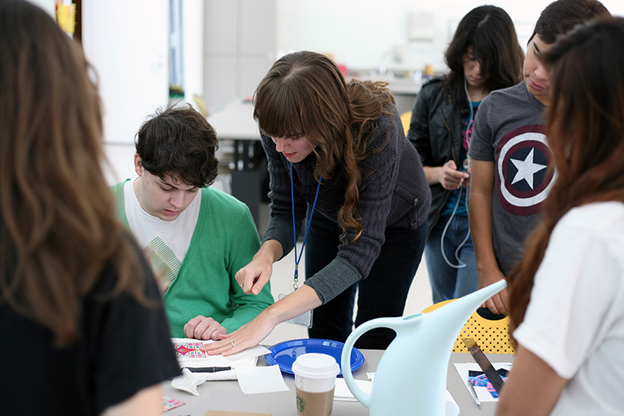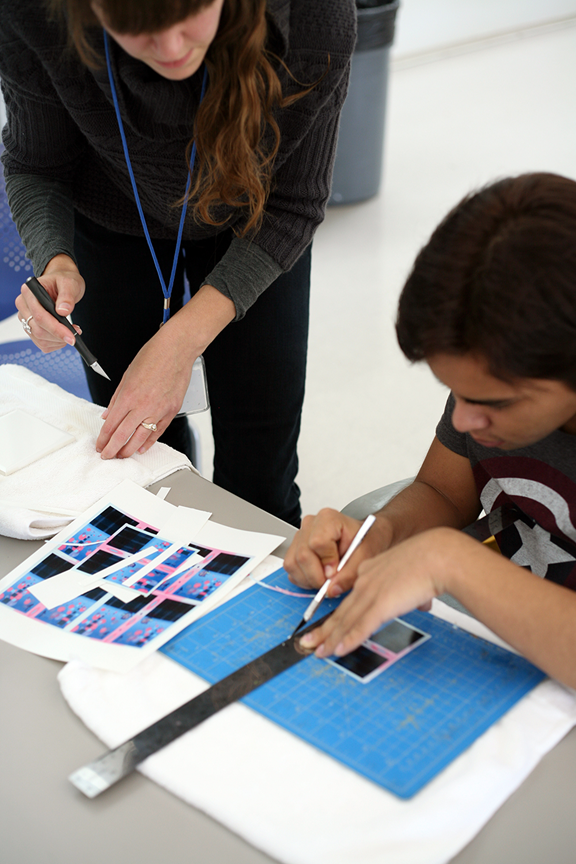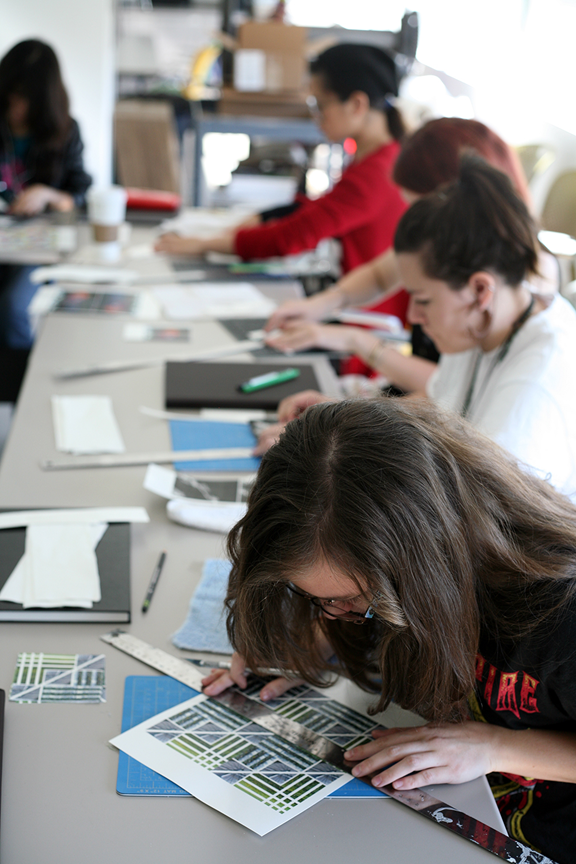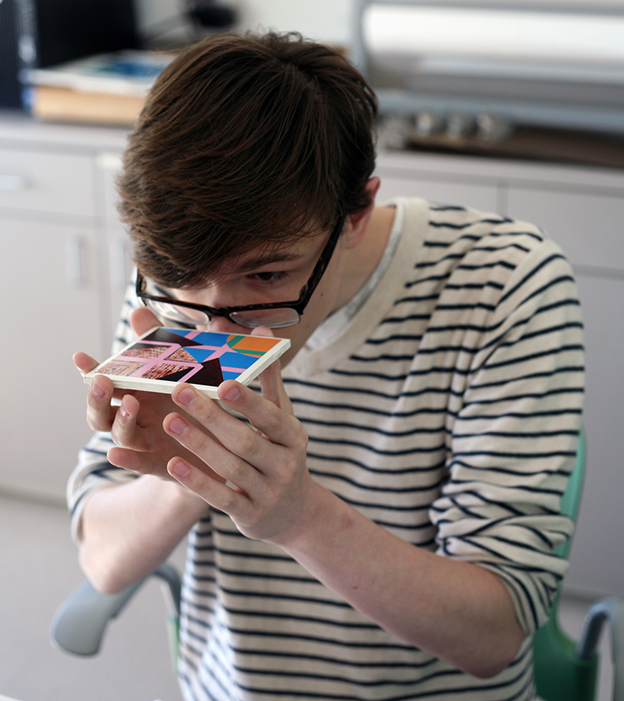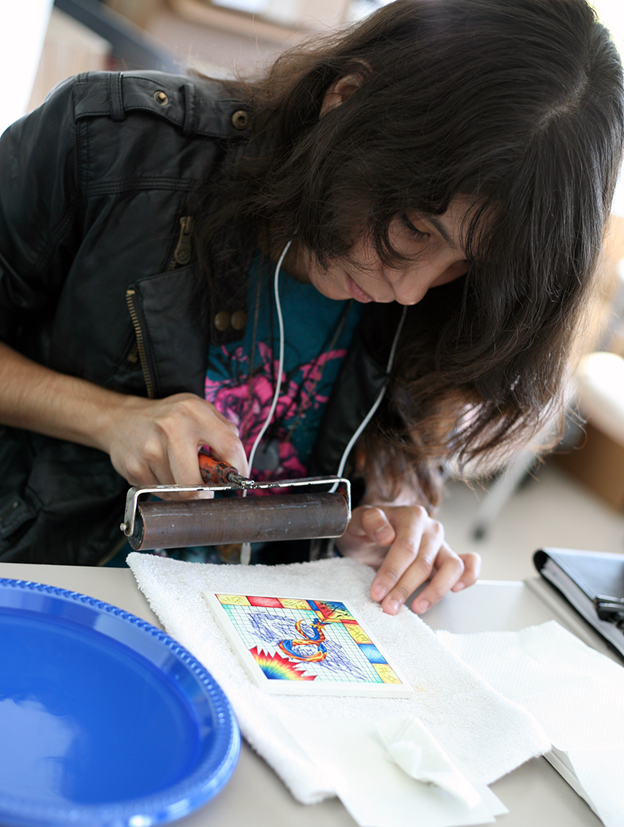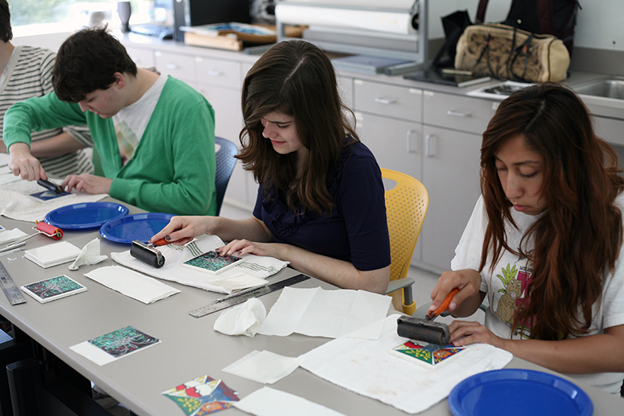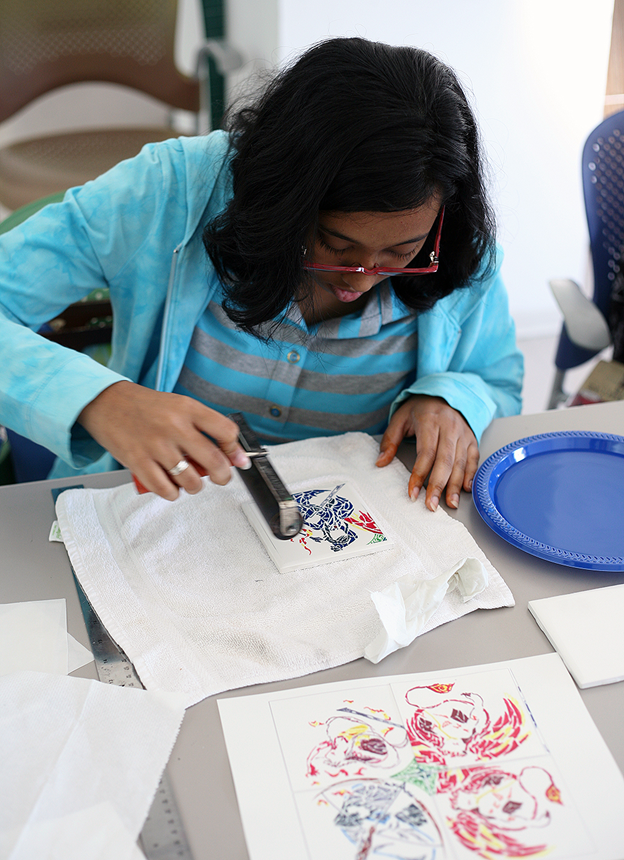10.20.13. Day 3 with Cassandra Emswiler
This week T/AP began with a short lecture about French gardens, in particular the Palace of Versailles. The palace is a site of power, beauty, and tranquility, and the layout of the entire landscape was designed to reinforce the reign of the monarchy. Cassandra shared her interest in architectural mimicry of nature within built landscapes. For example, the fountains of Versailles mimic lakes, and the columns of the structures mimic trees. The palace grounds are a place where nature is controlled by the grid and all elements are orderly and restrained. Cassandra closed her lecture with an explanation of haptic (an understanding that involves all senses and movement) and optic (an understanding from a static point that is purely visual) experiences in relation to French gardens.
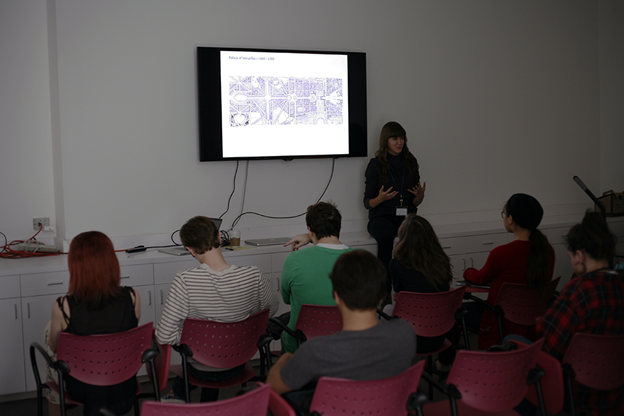
After the lecture, the class headed to the galleries to look at Carl Andre’s Slit, 1981. Cassandra led a conversation about the work, citing how the piece structures the surrounding space and engages the architecture. The students compared and contrasted the haptic and optic qualities of the work and questioned whether Slit mimicked anything from the real world—a roadway, for example. Cassandra also spoke about larger objects built from numerous singular modules in order to relate the art in the museum’s collection to the students’ personal tile projects, which they have been working on for two weeks.
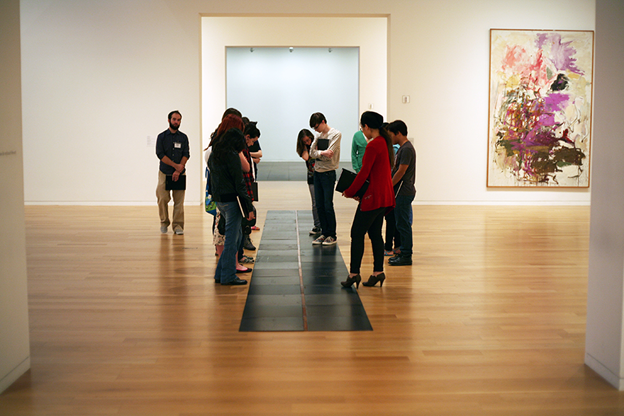
Afterwards we headed back to the studio, where Cassandra gave a demonstration and each student’s designs were printed in color on a specific type of transfer paper.
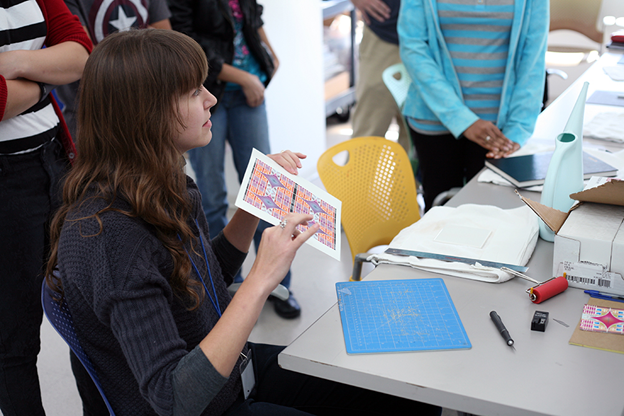
Cassandra showed the proper way to cut each paper to the exact dimensions of the students’ tiles for the optimal transfer. She then taught the T/AP students her personal method for transferring the print onto each ceramic tile, which included soaking the paper, positioning, and applying with a hand brayer.
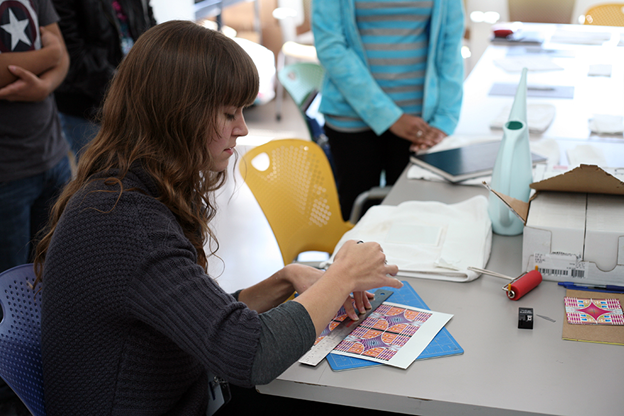
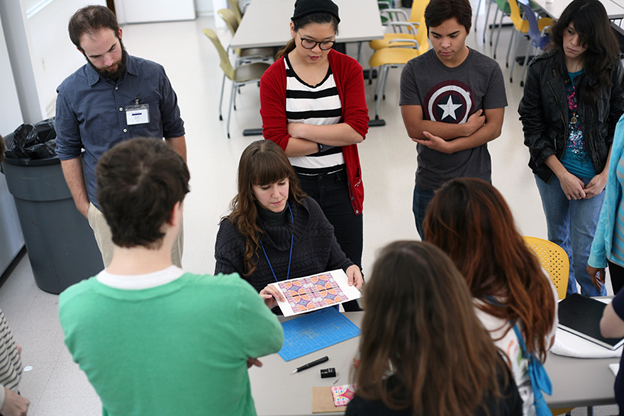
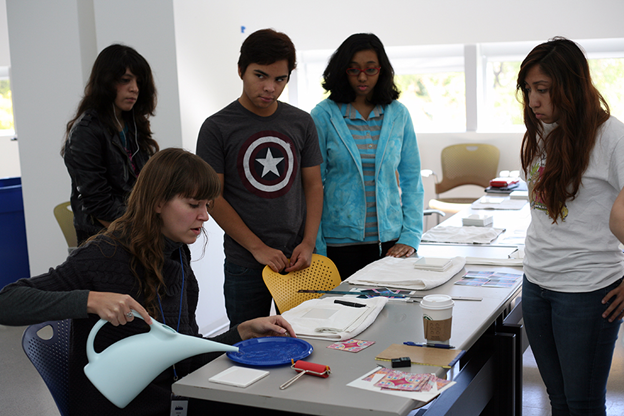
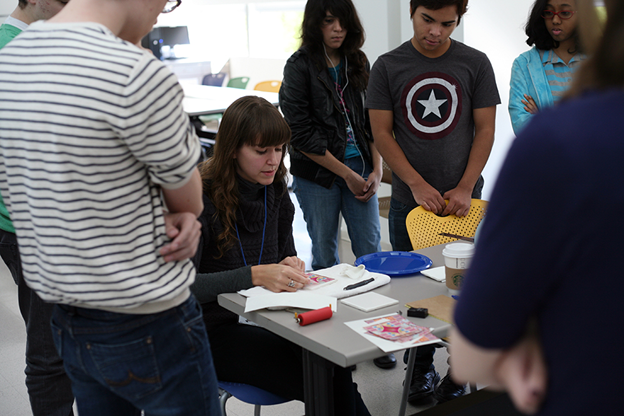
After the demonstrations, the students began to transfer their own images onto tiles. The goal of the day was for each student to have a least four ceramic tiles showcasing their design.
